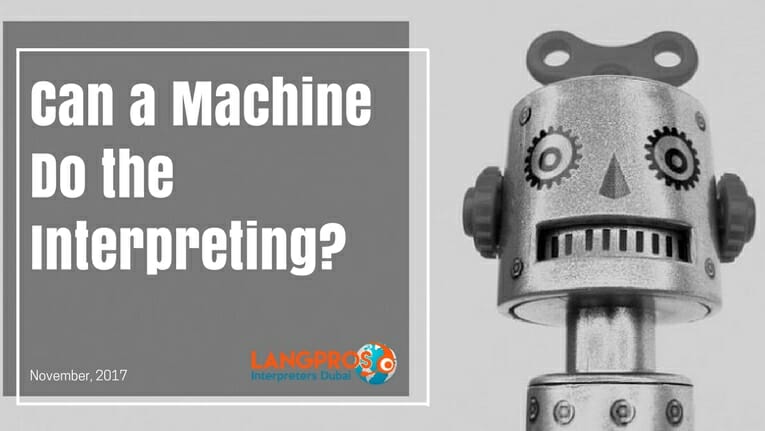The translation of written texts by machines are becoming more and more common. So, what about interpreting? Can a machine do it? Tech companies have developed some systems which can translate verbal statements, but they are not as accurate human interpreters. The technology behind machine interpreting is still largely being developed. Right now, the systems are valuable in situations where simple phrases need interpreting. These systems are also useful in desperate humanitarian crises when any translation, no matter the quality, is better than none.
So, how do these systems work? There are different machines in development, but they all seem to combine the use of automatic speech recognition, machine translation, and text-to-speech synthesis. The automatic speech recognition system detects the speaker’s voice and writes it into text, similar to what Apple’s Siri does. Then, the machine translation system, think something like Google Translate, translates this written text into a new language. This new text is then rendered back into verbal communication through text-to-speech synthesis, again like Siri. The systems each do this a little differently. Some skip the last step and provide projections of the new written translation on a screen. Other systems complete the oral rendition through large speaker systems.
Machine interpreting systems, though improving, are still very unreliable. For starters, they rely on automatic speech recognition systems. Anyone who has ever used Siri on an IPhone knows these systems are nowhere near perfect. Not only do they have difficulty when deciphering clearly annunciated sentences, they also cannot decipher accents or communication in loud areas. Machine interpreting also relies on machine translation systems, which are imperfect. These systems translate words based on a database of words they have in their memory. Because of this, they often misidentify words and provide an incorrect translation. These systems are also fairly slow. And unlike a human interpreter, they cannot provide simultaneous interpreting because they cannot anticipate what a speaker would say next. They can only provide a translation after the completion of an idea and it would only be the gist of what was said.
Human interpreters will always deliver a more accurate interpretation. This is largely because machine interpreting systems cannot translate tone or body language. The understanding of culture and colloquial practices is another vital part of interpreting that a machine cannot fully comprehend. Maybe one day machine interpreting will replace human interpreters, but this is unlikely. A real interpreter does more than just translate someone’s words.
Please contact us for more information about our interpreting services.
